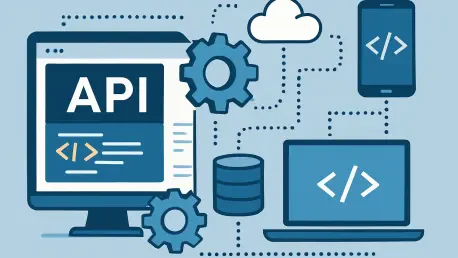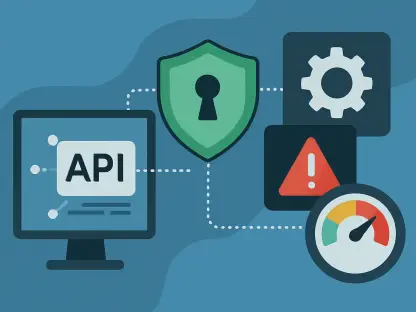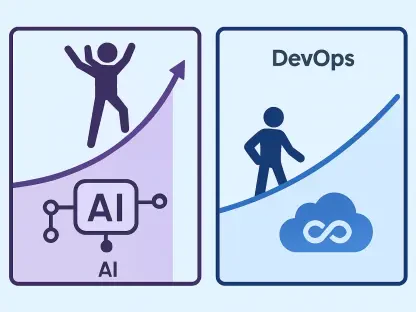Today, we’re thrilled to sit down with Vijay Raina, a renowned expert in enterprise SaaS technology and tools. With a deep background in software design and architecture, Vijay has been at the forefront of shaping innovative solutions for complex integration challenges. In this conversation, we dive into the world of API integrations, exploring how businesses can streamline connections with multiple systems, the intricacies of creating unified data models, and the technical strategies behind efficient data syncing. We also touch on the evolving landscape of software development and what the future might hold for API technologies.
How did your early experiences with technology shape your passion for software development and eventually lead you to focus on SaaS solutions?
My journey started pretty early, much like many in this field, with a fascination for problem-solving through code. As a teenager, I was drawn to gaming and automation, which got me tinkering with scripts and tools to simplify repetitive tasks. That curiosity led me to join online communities where I learned from others and contributed to shared projects. Those formative years taught me the value of collaboration and building reusable solutions—core principles that later aligned perfectly with SaaS. Working on enterprise tools felt like a natural progression because I saw how much businesses struggled with disconnected systems, and I wanted to create scalable, impactful solutions.
What are some of the biggest challenges businesses face when integrating with multiple third-party systems, and how do you approach solving them?
Businesses often need to connect with a variety of platforms—think accounting software, HR systems, or ticketing tools—because their customers or internal teams use different tools. The challenge lies in the sheer diversity of APIs; each has its own structure, authentication methods, and quirks. This creates a lot of custom work, maintenance headaches, and delays. My approach has been to focus on creating a unified layer that abstracts these differences. By building a standardized interface, we can reduce the complexity for developers, letting them focus on their core product rather than wrestling with endless integration details.
How do you decide which categories or verticals, like HR or accounting, to prioritize when developing integration solutions?
It really comes down to customer demand and market impact. We look at where businesses are spending the most time and resources on integrations—areas like HR and accounting often top the list because they’re critical to operations and involve sensitive data. We also consider the complexity and fragmentation in a category. If there are dozens of popular tools with no clear standard, that’s a prime opportunity to add value by simplifying access. Ultimately, it’s about listening to the pain points of our users and aligning with strategic business needs.
Can you explain the concept of a normalized data model and why it’s so important for API integrations?
A normalized data model is essentially a standardized way of representing data from different sources. Imagine two systems—one calls a field ‘title,’ the other ‘name.’ Normalization maps these to a single, consistent term that a developer can rely on. It’s crucial because without it, developers have to write custom logic for every system they integrate with, which is a nightmare to scale or maintain. By creating this common language, we enable faster development and broader compatibility, ensuring that data from diverse APIs can be used seamlessly in a single application.
How do you handle unique features in platforms that don’t have direct equivalents in others when building these models?
That’s a tricky one, and it often requires a mix of creativity and pragmatism. Take a feature like ‘epics’ in a project management tool—some platforms have it, others don’t. We typically create a more generic concept, like a ‘grouping’ or ‘category,’ that can encompass the unique feature while still fitting into a broader structure. This way, we preserve the functionality for users who need it without cluttering the model for those who don’t. It’s about striking a balance between specificity and simplicity, often with configurable options to access platform-specific capabilities.
What’s your process for dealing with unexpected behaviors or undocumented aspects of APIs during integration?
APIs can be full of surprises—undocumented endpoints, deprecated fields that still linger, or behaviors that only surface under specific conditions. Our process starts with thorough research and testing to map out as much as we can upfront. But when surprises pop up, we rely on a combination of manual investigation and automated monitoring to catch discrepancies. We also maintain close communication with API providers to clarify ambiguities. Over time, we’ve built robust error-handling mechanisms and fallback strategies to ensure integrations don’t break even when something unexpected happens.
Why is syncing data in the background often a better choice than real-time API calls for every request?
Real-time calls sound great in theory, but they can be incredibly inefficient, especially with APIs that aren’t optimized for speed or volume. Some systems require multiple requests just to fetch a small dataset, which slows everything down and risks hitting rate limits. Background syncing lets us pull data in bulk, normalize it, and store it locally so it’s ready when a user needs it. This approach reduces latency for end users and minimizes strain on third-party systems. It’s about creating a smoother experience while being mindful of resource constraints.
Can you walk us through how a typical data syncing process works, especially the difference between initial and ongoing syncs?
Sure. The initial sync is the heavy lift—it’s when we pull in all the historical data from a system for the first time. This can involve thousands of requests, depending on the API’s structure, and we have to be careful not to overwhelm their servers. We often work with providers to optimize this step. Once that’s done, ongoing syncs are much lighter. We focus on detecting changes—new data, updates, or deletions—using timestamps, webhooks, or diffing techniques. These updates are then pushed to our customers in near real-time via notifications, ensuring they always have the latest information without redundant processing.
What do you see as the driving forces behind the growing need for API integrations in today’s business landscape?
Customer expectations are a huge driver. Businesses today expect their tools to work together seamlessly—whether it’s syncing payroll data with accounting software or pulling customer info into a CRM. Fifteen years ago, APIs were a rarity, but now they’re table stakes. This demand pushes companies to prioritize integrations because it directly impacts sales and user retention. On the flip side, being open with APIs can make a platform a central hub in a business’s ecosystem, creating stickiness. It’s a cycle of demand and strategic positioning that keeps accelerating.
What is your forecast for the future of API technologies and their role in software development?
I think we’re heading toward a future where APIs become even more intelligent and flexible. Right now, access patterns are a bottleneck—most APIs are rigid, forcing developers to pull massive datasets for simple queries. I foresee a shift toward semantic search and vectorized data lookups, allowing more nuanced interactions without excessive overhead. However, cost will be a hurdle; companies might hesitate to invest in these capabilities unless there’s a clear competitive edge. Beyond that, I expect AI to play a bigger role in automating integration setup and maintenance, potentially reducing the manual effort needed. It’s an exciting space, but it’ll require balancing innovation with practicality.









